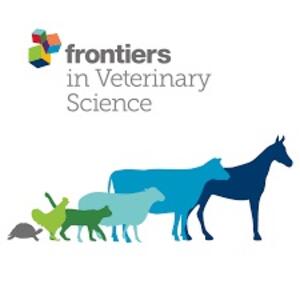
Brucellosis: A neglected zoonosis
Abstract
Brucellosis is one of the most widespread bacterial zoonotic diseases around the world. The disease has huge significance in both animal and humans due to its effect on productive and reproductive performances, economical loss, international trade, and public health consequences. The disease is reported globally with the exception of a few high-income countries that have successfully eliminated the disease. The occurrence of the disease shows variability among endemic regions and factors such as misdiagnosis and underreporting may have masked the actual number of cases, which could be substantially higher in number. Human brucellosis cases are globally distributed, exhibiting varying prevalence rates in Asian and African regions, and the incidence is more noticeable in low- and middle-income countries (LMICs) where lesser regulated livestock production, trading, handling, and consumption practices are followed. The human infection burden is significant, with a real incidence between 5,000,000 and 12,500,000 cases per year. The disease is also considered as an occupational hazard and people involved in animal farming, trading, diagnostic, treatment, and consumption of animal-origin contaminated foods are prone to acquiring the infection. The identification of risk factors for brucellosis in livestock is of paramount importance in preventing the dissemination and persistence of the disease. Larger livestock population, dominance of smallholder farming, poor infrastructure, and husbandry practices, weak surveillance systems, lack of awareness, limited access to healthcare, inadequate control programs, consumption of unpasteurized dairy products, close interactions with animals, and poor diagnosis facilities increase the risk of brucellosis in humans. Serological tests are the most used tests for the diagnosis of Brucella infection throughout the globe, mainly in LMICs. These serological tests are easy to perform, less expensive, and give fast results; however, they are prone to false positive/negative reactions due to the cross reactions with other microbes. The confirmatory diagnosis is achieved through either the isolation of Brucella spp., but it is expensive, slow, cumbersome, and require good biosafety level in laboratory, which makes it difficult to many low-income countries to effectively detect the disease. In case of humans, diagnosis of brucellosis is considered even more difficult because of its confusion with few other diseases that could exhibit similar signs/symptoms with brucellosis. On many occasions, physicians' term similar disease condition as pyrexia of unknown origin (PUO) or fever of unknown origin (FUO) in the absence of confirmatory diagnosis. Brucellosis control is a costly, time-consuming, labor and resource-intensive initiative which cannot be afforded by many LMICs. Control measures may vary from country to country based on socioreligious and farming practices and availability of resources in terms of money, materials, and manpower. The common control measures include vaccination and test-and-slaughter which are used either alone or in combination. Combining vaccination along with test-and-slaughter, personal protection in humans, and maintaining sanitary condition is an ideal control strategy. However, in LMICs, the control strategy involving vaccination, testing, quarantine, and implementing compensation policies in cases of slaughter is not as effective or practical. These factors combined with the lack of knowledge among the general masses contribute to the neglected status of brucellosis. The effective control of the diseases can be achieved through a robust, collective, and coordinated effort among human and animal health professionals following One Health approach.
Citation
Deka, R.P., Kumar, M.S., Sanjumon, E.S. and Biswas, R. 2024. Brucellosis: A neglected zoonosis. IN: Samanta, I., Bandyopadhyay, S. and Sparagano, O. (eds), Neglected zoonoses and antimicrobial resistance: Impact on One Health and Sustainable Development Goals. Elsevier. pp. 167-182.










